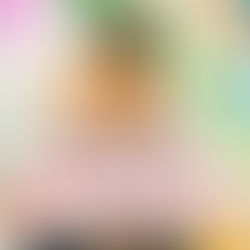5 Incredible Facts About Indian Art
- Shantala Palat
- Jun 26, 2018
- 3 min read
Indian Art consists of a variety of art forms, including pottery ,sculpture, visual arts, textile arts and more. Geographically, it spans the entire Indian subcontinent, including what is now India, Pakistan, Bangladesh, and eastern Afghanistan.
The origin of Indian art can be traced to pre-historic Hominid settlements in the 3rd millennium BC. On its way to modern times, Indian art has had cultural influences, as well as religious influences such as Hinduism, Buddhism, Jainism, and Islam.
Today Indian art due to its wealth of creativity, vibrancy, and diversity holds a place of pride in the world. Even though most of us are aware of our art heritage and pride, there are some special aspects of Indian art which only a few people know .
Today artist Shantala Palat will shares some of the four amazing facts of Indian art.
1. Paintings to tackle Deforestation
Madhubani, an art form from Bihar, which is famous for its beautiful illustrations of Hindu deities and dates back as early as the 16th century, has successfully achieved this feat. In 2012, dozens of artists painted vibrant masterpieces of Hindu deities on barks and trunks to restrain people from felling trees. The artists hoped that it would deter the god-fearing Indians from cutting the trees and their wishes came true. Not a single painted tree was chopped down! Today the highway number 52 of the Madhubani district is a well-known tourist destination.

2. The 100% organic Kalamkari
In the age of large-scale textiles, there are still artists who do Kalamkari paintings on fabrics. Kalamkari or qalamkari is a type of hand-painted or block-printed cotton textile, today mainly produced in Iran and India. The word Kalamkari is derived from a Persian Persian where qalam means pen and kari means art or craftsmanship. In other words,, drawing with a pen. This ancient form of art is completely organic. From the brushes to the dyes to the cloth, everything is 100% natural.

3. The popular Warli art – actually dates back to 4500 years
Today when we think of ethnic home decoration collection and clothes wear, Warli paintings come to our mind. Today it is used on mugs, lanterns, walls, paintings, and bed-sheets. But do you know the gorgeous Warli art dates way back to almost 3000 BC?
Warli painting is a form of tribal art mostly created by the people from the North Sahyadri Range in India. This range encompasses cities such as Dahanu, Talasari, Jawhar, Palghar, Mokhada, and Vikramgadh of Palghar district. This tribal art originated in Maharashtra, where it is still practiced today.

4. 100% eco-friendly Kerala Mural Painting
Kerala murals, one of the world’s finest art frescos is still done with eco-friendly vegetable colors as it was done 3500 years ago.
Mural paintings uses complex layering and harmonious shading in these classical artworks famed for depicting mythology and legends, which are drawn on the walls of temples and churches in Kerala. This art form immensely enjoyed royal patronage and it is said that early Kerala murals and architecture was heavily influenced by the Pallava dynasty. Dating back to the 8th century, the first frescos were created at Kanthaloor, Temple in Thiruvananthapuram district in the 13th century. The most prolific period of mural art was during the 15th and 16th century when the second Bhakti movement rose in Kerala.
Today, the mural art has stepped outside the walls of the temples and found its way to the sarees, terracotta, wood, glass and even steel as well.

5. British Museum has thousands of South Indian Paintings from the 17’Th century
The British Museum has a treasure trove of South Indian paintings which go back to the 17th century. In 2007 to celebrate 60 years of Indian Independence, the museum exhibited more than 1,000 works in a diverse range of themes, genres, and techniques from the exquisite Indian school of art.





























Comments